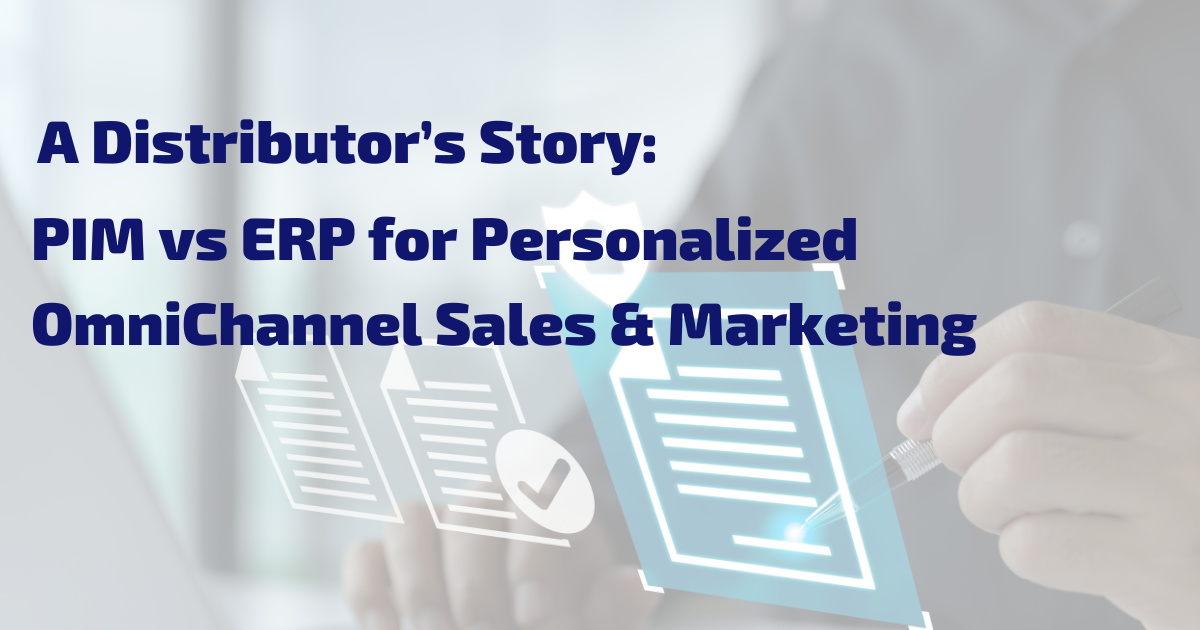When CSS Commerce CDO Rob Neumann hosted one of the Distributor Roundtables, he featured Ted Wichman CIO for Superior Communications, a T-Mobile/Verizon distributor, who shared with other distributors his experience and rear-view mirror glimpse into making the decision to add a PIM and determining what will work with best for his customers.
Although next-generation ERP e-commerce platforms are designed for omni-channel digital commerce, they don’t have the capability for the efficient optimization of complex and/or high-volume product portfolios typically carried by manufacturers, wholesalers, and distributors. The lively discussion between distributors delved into how ERP product description fields are large enough for designing rich, targeted customer experiences on front-end eCommerce platforms.
“Our internal PIM was not geared towards marketing information. It was a manufacturing PIM,” explains Superior Communications CIO Ted Wichman, “when I looked at the (product) attributes available, the (navigation) menu hierarchy; they just weren’t web ready.”
“I did a lot of research on digital asset management (DAM) systems,” Ted continues, “tiny descriptions in ERP which work for production and assembly, but not for our website (search & display).”
“And not to mention the category tree; that was terrible too,” Ted adds, “(now) we’ve automated the menu system so I can read in the categories, push that to a server, and then Pimcore creates the (navigation) menus.”
So, there was just so much difference between what we had and what we needed,” Ted concludes, “we needed an intermediate stage which is Pimcore.”
Scalable Product Taxonomy
Granular product attributes (objects, features) are what drive customer experience marketing and unlimited scalability of modern PIMs to a large degree.
“How do you handle your (product) taxonomy with all of these items,” asks Distributor Marshall, “all the different attributes, different filters?”
“That’ll be handled within Pimcore as part of the form fields,” Ted replies, “we set up (attribute) associations between accessories and handsets, all automated.”
“If I were to advise how to do it right (scalability, flexibility); let’s think about the structure, hierarchy, and how you want to relate objects (attributes),” advises Rob Neumann CDO CSS Commerce, “doing that much upfront work on long-term enhancements has tremendous benefit. Setting up your hierarchy and master data structure will lead to a lot of success.”
Merchandising
A crucial point raised during the discussion revolved around handling discontinued items. Given the constant stream of products being discontinued, it often leads to outdated system entries that clog website search functionality leading to frustrating buyer experiences.
“Items get discontinued all the time. sometimes we’ll leave them on so the person can find it, but then we’ll tag it with an alternative (product), and they’ll click on it,” Marshall explains, “it would be nice if you could remove that item, and if the person types in the old part number, it just takes them right to the new one.”
“We have an MRO client that carries a large number of SKUs,” Rob offers, “one of the problems we solved was to connect their part number, the manufacturer’s part number, & competitor part numbers (together) with a common description.”
We have the ability to do that in our ERP,” Marshall adds, “it’s a little bit messy and then we got to write code to connect to Magento.”
“All of that (product) relationship is more easily managed inside a PIM,” Rob explains, “what we did in the solution was provide (product) alternatives. So, if you looked for a Kohler faucet, you’d see the Kohler faucet you searched for, but you’d also see their (the client’s) OEM (lower cost, higher margin faucet).”
Through drag-and-drop functionality, PIMs offer companies the ability to construct product variants and attribute relationships that can be sliced-and-diced into creative market segment merchandising.
Rob offers an example, “we have a new client that send a data packet based on a buyer request. (Buyer) goes in and enters a BOM, a pre-filtered product catalog gets assembled in PIM, and automatically sent to the buyer.”
Advanced Search
The use of different product descriptions while adhering to ERP character limits emerged as another significant issue.
“ERPs often have a have a very limited description to be able to pull and design against,” Ted states.
“Yeah, our ERP short description only allows, I don’t know, 43 characters. We have a short description for our website, which is usually different than what the ERP system is,” adds Marshall.
“I build some of my (ERP) descriptions based on the information from PIM. I’ll just fold it all together and make a description once…It’s all done.”
“Incomplete and poor product information is the greatest obstacle on the path to e-commerce and multichannel marketing success,” Rob advises, “finding something inside a million SKUs is really hard. So, having better data, better descriptions with fast retrieval is really important…being able to pull that out based on stronger Master Data.”
Attributes can be copied to images, video, technical documents, user manuals, case studies, and whitepapers downloads for high findability, search engine indexing, and comprehensive on-page product offers.
“One of our top manufacturers has 50,000 items and only 17,000 on the website,” Marshall states, “we keep the rest of it in our item catalog, and we can pull those.”
“We can put in tremendously large amount of information (in Pimcore),” Ted replies, “you can decide what to display,”
“The marketing team can use the PIM and actually schedule what goes on and off the website,” Rob offers, “they can update photos or information globally. We have a client that do a lot of sales (promotions) like 30% off, very Black Friday oriented. They use the PIM to schedule promotions, pull it on and off (the frontend) by date, for example.”
“If we add a new item, quote a new item, or bring a new item into stock,” Marshall relates, “it doesn’t automatically go on the website. We have to manually enter it into Magento, add image files, and then upload it.”
“Another little twist is that we do a lot of vendor managed inventory where some items might need to have a really unique description to fit on a label, Marshall continues, “oftentimes we’re always recreating and redoing the work over and over again.”
“For the ability to do what you just described,” Ted replies, “it’s the perfect use case for it…that’s exactly why you have (PIMs)…tiny descriptions in ERP which work for production and assembly, but not for our website (display).”
“That’s where I think the superiority of a PIM versus doing it in an ERP works better,” Ted advises, “you can have it in the ERP, but you’re really displaying it to the website, inside Magenta, and a PIM.”
Workflow Automation
“One of my main goals was system automation for product management and all interactions between Magento and our ERP accounting system,” Ted states.
“We had a database link go down and these are all linked servers, this was right before a push to get a bunch of SKUs up on the site Ted adds, “and Marketing lost their mind because they had to do it manually, ‘we have to look up images, and copy & paste?’”
“It really highlighted how much (PIM) automation makes a difference,” Ted continues, “you can just pull all that right over.”
The only thing not automated is a (manual) review before it’s published to the website,” Ted concludes, “PimCore workflow (automation) where there might be one person reviews images, another for descriptions, and the last person can authorize it to be pushed to Magento, which is also automated.”
“CSS Commerce is the best partner we could have wanted – they have performed well under pressure!” Ted
“Setting up your hierarchy and master data structure will lead to a lot of success,” Rob concludes, “(it’s) one of the reasons why we represent more than one PIM (platform)”. CSS uses a component-based development framework to create flexible, scalable, and integrated B2B eCommerce solutions for manufacturers and distributors of complex and high-volume products.



